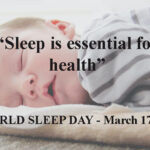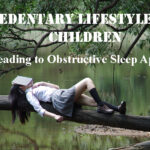Snoring or Sleep apnea is one of the major health problem. Oral appliance therapy is an effective treatment option for snoring and obstructive sleep apnea.
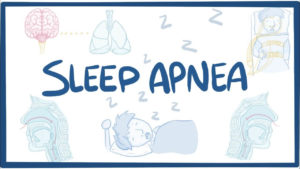

Snoring is the hoarse or harsh sound from nose or mouth that occurs when breathing is partially obstructed while sleeping. It is caused by the vibration of respiratory structures and the resulting sound due to obstructed air movement. In some cases, the sound may be soft, but in most cases, it can be loud and unpleasant. Snoring during sleep may be a sign, or first alarm or death knell, of obstructive sleep apnea (OSA).
Obstructive sleep apnea (OSA) is a sleep-related breathing disorder that involves a decrease or complete halt in airflow despite an ongoing effort to breathe. It occurs when the muscles relax during sleep, causing soft tissue in the back of the throat to collapse and block the upper airway. This leads to partial reductions (hypopneas) and complete pauses (apneas) in breathing that last at least 10 seconds during sleep. Most pauses last between 10 and 30 seconds, but some may persist for one minute or longer. This causes abrupt reductions in blood oxygen saturation, with oxygen levels falling as much as 40 percent or more in severe cases.
The brain responds to the lack of oxygen by alerting the body, causing a brief arousal from sleep that restores normal breathing. This pattern can occur hundreds of times in one night. The result is a fragmented quality of sleep that often produces an excessive level of daytime sleepiness. Most people with OSA snore loudly and frequently, with periods of silence when airflow is reduced or blocked. They then make choking, snorting or gasping sounds when their airway reopens.
When left untreated, sleep apnea can cause excessive daytime fatigue, morning headaches, and memory loss. In addition, studies suggest that untreated sleep apnea increases the risk of numerous health issues, such as hypertension, congestive heart failure, atrial fibrillation, coronary artery disease, stroke, type 2 diabetes and other dangerous conditions.
Snorers cause their partners to lose about an hour of sleep each night, on average and may result in marital discord. Snoring isn’t Sexy!
Snoring / Sleep Apnea Treatment :
Lifestyle changes are recommended, such as :
1. Losing weight
2. Avoiding alcohol close to bedtime
3. Treating nasal congestion
4. Avoiding sleep deprivation
5. Avoiding sleeping on your back
For snoring accompanied by obstructive sleep apnea, definite treatment is mandatory.
Oral appliance Therapy:


Only a dentist specialized in Dental Sleep Medicine can optimize the fit and position of the appliance. Oral appliances for the treatment of sleep apnea continue to increase in popularity as awareness grows amongst the public that oral appliances are an effective first line treatment for many sleep apnea sufferers. Only FDA approved oral appliance should be utilized for the treatment of obstructive sleep apnea. The American Academy of Sleep Medicine (AASM) has approved oral appliance therapy (OAT) as a first line treatment for patients diagnosed with mild to moderate OSA and for patients with severe OSA, who are unable to tolerate or cannot wear CPAP devices. Another option for people with severe OSA is combination therapy (wearing CPAP and an oral appliance together) to help reduce the pressure on a CPAP machine, making it more comfortable to use.
Advantages of Oral Appliance Therapy:
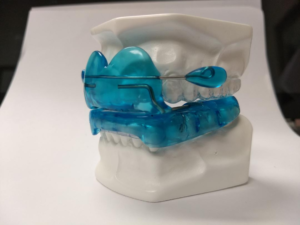

Although there are a few over-the-counter appliances you can purchase at drug stores or even online, remember that these oral appliances are not FDA approved for sleep apnea. When not fitted properly over-the-counter appliances can cause unwanted side effects, such as jaw problems or tooth movement or can even have the opposite effect and inadvertently worsen sleep apnea.
Continuous positive airway pressure (CPAP):


Although CPAP is a reliable and effective method of treating OSA, many people find it uncomfortable or have trouble adjusting to the noise or feel of the machine. It restricts movements while sleeping and do not work with any patient sleeping positions. It has requirement of consumable parts to be replaced frequently. CPAP machine requires a power source and difficult to carry around while traveling. Sleeping with the CPAP mask can be a daunting prospect for newly diagnosed OSA sufferers. Some people may find it embarrassing to wear in front of a partner. Others may find wearing it feels uncomfortable or odd.
Surgery:
Surgery is effective only in selected cases.
Current scenario:
An estimated 182 million Indians suffer from the condition, with more than 95% of suspected cases remaining undiagnosed. Untreated sleep apnea contributes to an increased risk of serious health conditions such as stroke, high blood pressure, diabetes, heart failure, irregular heart beats, heart attacks, depression, worsening of ADHD, headaches.
Sleep Healthy ! Celebrate Life !!
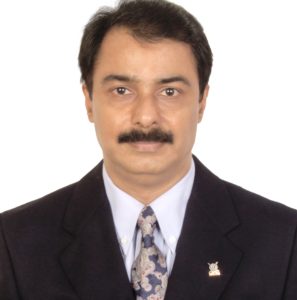

Dr Krishnan Subramanian
Director, The Healthy Sleep, Thalassery, Kerala,
Mob : 9745612777 Landline : +91-490-234-2424
Email : krishnan.smile1@gmail.com
The author is Member, Draft Group on National Guidelines for Treatment of Obstructive Sleep Apnea, Ministry of Health, Govt. of India and President, Indian Academy of Dental Sleep Medicine.





